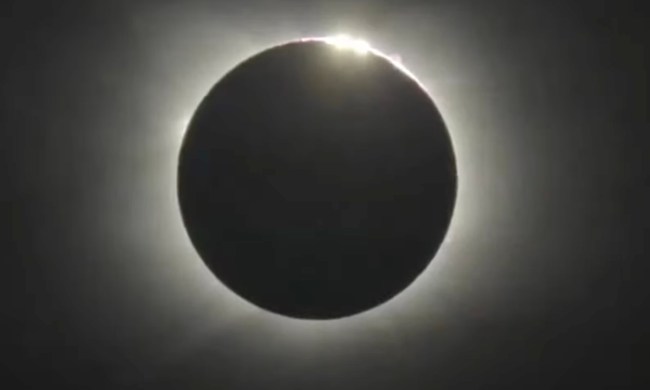NASA has released its monthly update of tips on what to look out for in the night sky in the coming weeks. Three things stand out for December: Venus, Comet Leonard, and the Geminid meteor shower.
Venus
First up, Venus, the second planet from the sun. After the moon, Venus is the second brightest object in our night sky, making it the easiest feature to spot among this month’s goodies.
NASA recommends looking out for Venus as the moon appears to pass close by on December 7. Clear skies will also offer a glimpse of Jupiter and Saturn. Check the image below to see how they’ll be positioned in the night sky in the coming days.

Comet Leonard
A recently discovered comet called Leonard will make its closest pass of Earth on December 12. NASA says there’s a chance you might be able to spot Comet Leonard with the naked eye but adds that as the brightness of a passing comet is hard to predict, having a pair of binoculars at hand will offer your best chance of viewing it.
“In the first couple of weeks of December, Comet Leonard can be found in the east before sunrise, passing between Arcturus and the handle of the Big Dipper,” NASA explained on its website. “It approaches the horizon right around the time of its closest approach to Earth, meaning it’ll likely be brighter but more challenging to observe. It then switches over to being an evening object after around December 14, for just a little while after the sun sets, as it begins its long haul outward from the sun again, progressively fading in brightness.”

Geminid meteor shower
December means the return of the Geminid meteor shower where you can observe bright streaks of light flashing across the dark sky as small particles of asteroid debris burn up in Earth’s atmosphere.
This year’s meteor shower is set to be at its most active overnight on December 13 and 14, when you might be lucky enough to catch up to 40 meteors an hour streaking across the sky.
NASA notes that the sun will be 80% full at that time, meaning its brightness could adversely impact the visibility of the shower. But it adds that as the moon will be setting at around 2 a.m., this leaves early birds with a couple of hours before dawn to catch the best of the shower.
“The meteors appear to radiate from the constellation Gemini, which you’ll find high in the west,” NASA said, adding that although most annual meteor showers are caused by Earth passing through trails of dust-sized particles of comet debris, “the Geminids are one of the few meteor showers that are caused by debris from an asteroid that crosses Earth’s orbit — in this case, one called Phaethon.”

If you need more help identifying star formations in the night sky so that you can more easily identify this month’s treats, check out these excellent astronomy apps for iOS and Android.


